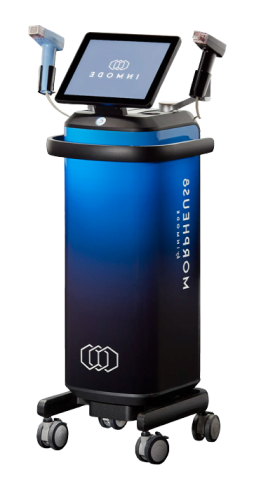Navigating the Neurotoxin Landscape
Lately, neurotoxin therapy has gained a lot of traction in the medical field and beauty industry. However, as their popularity grows, many false perceptions about these substances are sprouting up as well. Here, we will discuss the top myths that exist regarding neurotoxin treatments so that readers can know what is true and what isn’t. By breaking down these misconceptions, we want to give readers a clearer understanding of the advantages and limitations of neurotoxin treatments so they can make better choices in the future.
Debunking Myths and Unveiling Facts in Medical and Beauty Arenas
Myth 1: Neurotoxins Are Only for Cosmetic Purposes
The myth that neurotoxin treatments are only about enhancing beauty is wrong. Neurotoxins such as Botox not only effectively reduce wrinkles but also serve significant therapeutic functions. The benefits of this treatment are further demonstrated in the alleviation of migraines, relaxation of muscles in people living with cerebral palsy, and treatment of excessive perspiration. Thus, we will dispel the myth that this toxin is merely a cosmetic agent and focus on the various medical uses of neurotoxin treatments that improve looks and general body wellness.
Fact 1: Neurotoxin Treatments and Cosmetic Enhancement
With a significant emphasis on the maintenance of youthful looks by reducing wrinkles, proper and timely application of neurotoxin treatments makes this possible. The use of these injections to relax facial muscles and achieve natural-looking outcomes that do not require radical interventions is a common practice.
Neurotoxin treatments are loved by many since they are effective in reducing wrinkles, provided they are done by an experienced practitioner and personalized for each individual’s needs. This creates an atmosphere where individuals can understand neurotoxin treatment better and what it entails.
Read also: Dermal Filler Treatment: Cost and Financing Options
Myth 2: Neurotoxin Treatments Are Painful
Many people dread having neurotoxin treatments because of the anticipated pain during injection. This is an issue that must be resolved to remove any apprehension related to the therapy course.
The psychology of pain perception is essential. Fear and anxiety often make people overrate the anticipated pain from injections. In fact, for most individuals, neurotoxin treatments are not excessively painful as such. The procedure utilizes fine needles, which help minimize discomfort during these injections.
Fact 2: The Comfortable Reality of Neurotoxin Treatments
It is preferable to say that neurotoxin injections are rarely painful, but people think they are. Real-life experiences support the idea that the use of neurotoxins is accurate and effective. Using fine needles to zero in on specific muscles makes the injection process a quick and simple one. Medical professionals always put their patients’ welfare first to assure them of easy procedures. The development of pain control measures like numbing balms and cold apparatuses also adds up to more comfort during neurotoxin treatments.
Myth 3: One Size Fits All: Neurotoxin Treatments Are Universal
However, contrary to the popular belief that neurotoxin treatments are the same for every person, there are individual differences in response to these treatments. Biological factors have a significant influence on the outcomes of neurotoxin treatments.
| Want Lasting Radiance? Discover the Truths and Schedule Your Neurotoxin Treatment. |
For instance, based on factors such as genetic composition and bodily divergences, different individuals experience responses that differ from one another in terms of neurotoxins. It is essential to recognize that each person’s body metabolizes neurotoxins differently, hence resulting in dissimilar durations for getting results as well as overall impact. Neurotoxin treatments do not follow a one-size-fits-all approach.
Fact 3: Tailoring Neurotoxin Treatments for Individual Success
It is understood that there are no universal treatments for neurotoxins. Hence, neurotoxin treatments can be personalized to individual needs and goals. Since each person’s response to neurotoxins is different, more doctors are resorting to individualized planning to achieve optimal results.
Tailor-made treatment methods factor in a person’s biology, genetic makeup, and the diversity of their physiology. This ensures that the treatment matches the patient’s results and targets their unique concerns. For better outcomes and effective attainment of aesthetic or therapeutic aspirations, people should appreciate the beauty of personalized plans.
Myth 4: Neurotoxin Treatments Are Permanent
A prevalent myth surrounding neurotoxin treatments is that their effects are permanent.
A neurotoxin, like Botox, prevents nerve signals and thereby relaxes specific muscles. However, its action mechanism is not permanent. Within a few months, the body metabolizes the neurotoxin gradually, leading to a return to pre-treatment status.
Managing expectations is essential in neurotoxin treatments. People must realize that subsequent treatment might be required in order to maintain desired results. Maintenance sessions are generally organized for long-term benefits as well as reducing the incidence of wrinkles and other treated conditions.
Fact 4: Embracing the Temporary Nature of Neurotoxin Effects
This treatment is only effective for a short period, and individuals who are considering it need to understand this fact. However, the outcomes are substantial and may take many months before completely disappearing.
It is essential to recognize that these treatments can be viewed with an open mind because of the ever-changing state of aesthetic enhancement that they offer. They can achieve their aim in life by scheduling follow-up treatments and maintenance sessions, which will help them enjoy long-term gains.
Read also: Morpheus8: Everything You Need to Know
Myth 5: Neurotoxin Treatments Are Unsafe
Neurotoxin treatments undergo rigorous testing and regulatory approval before reaching the public. Extensive scientific research supports their safety when administered in correct amounts by skilled practitioners. Concerns should be separated from the established safety of these treatments.
Fact 5: The Safety Net of Neurotoxin Treatments
The safety of neurotoxin treatments has been proven by scientific research. It has been observed how well they work in addition to side effects and long-term safety. Trust is built on industry standards, regulatory approvals, and rigorous testing that eventually provide a safe option for beauty and medical purposes.
Conclusion
In summary, dispelling neurotoxin treatment myths is crucial for informed decision-making. Beyond cosmetics, these treatments offer diverse therapeutic benefits and are generally painless and personalized for optimization. Recognizing their temporary nature and safety fosters confidence. For an informed and fulfilling experience, consider neurotoxin treatments at The Aesthetics Studio. Contact us to schedule your appointment.
Frequently Asked Question:
Q1.What is the primary purpose of neurotoxin treatments?
Neurotoxin treatments, such as Botox, are known for both cosmetic enhancements, like reducing wrinkles, and therapeutic applications, such as alleviating migraines or treating excessive perspiration.
Q2.Are neurotoxin treatments painful?
Contrary to common belief, neurotoxin injections are generally not excessively painful. Fine needles are used to minimize discomfort, and advancements in pain control, such as numbing balms, contribute to a more comfortable experience.
Q3. Do neurotoxin treatments have a one-size-fits-all approach?
No, individual responses to neurotoxin treatments vary due to biological factors. Each person’s body metabolizes neurotoxins differently, emphasizing the need for personalized treatment plans tailored to individual needs and goals.
Q4.How often should maintenance sessions be scheduled for neurotoxin treatments?
Maintenance sessions are generally organized for long-term benefits and to reduce the incidence of wrinkles and other treated conditions. The frequency of these sessions may vary based on individual responses and treatment goals.













